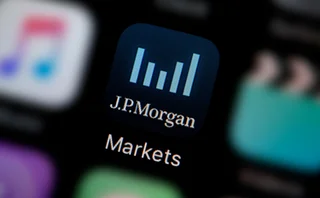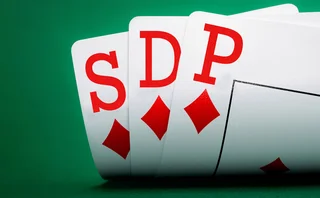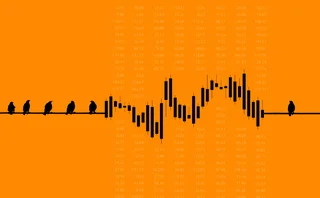
Madoff fraud puts focus on due diligence
As a swathe of investors reported sizable exposures to New York-based broker and hedge fund manager Bernard Madoff, several market players that had conducted due diligence on his firm told Risk that it had raised danger signals as far back as the late 1990s.
As of January 2008, the firm had $17.1 billion in assets under management and served 11-25 clients, SEC filings show. "All I can say is this is a real tragedy and we are doing everything we can to minimise the losses," says Madoff attorney Ira Sorkin, of New York-based law firm Dickstein Shapiro.
On December 16, SEC chairman Christopher Cox said the supervisor would conduct a review of its reaction to "credible and specific allegations" concerning Madoff, which dated back to at least 1999.
Many large and otherwise sophisticated dealers and funds of funds have been hit by the alleged fraud. Among them, BNP Paribas reported an exposure of €350 million ($492 million) to the fund stemming from its trading business and collateralised lending to fund of funds, while HSBC admitted it may have lost approximately $1 billion from providing financing to institutional clients that invested in Madoff. Man Group similarly reported a $360 million exposure to funds advised or sub-advised by BMIS, via its Switzerland-based fund of funds. According to the SEC indictment, Madoff himself believed total losses from the scheme added up to an eye-watering $50 billion.
Although the scale of the alleged scam has shocked onlookers, some market participants are not surprised by the accusations of manager fraud. In fact, those institutions that didn't invest in the fund say there were a number of red flags that should have warded off potential clients. One was a lack of sufficient independent oversight at BMIS, which didn't have a relationship with a major auditor.
"He was doing custody, trading and administration. That was a big red flag," says one London-based fund derivatives banker at a large European dealer. According to those who had done due diligence on BMIS, the multi-billion dollar operation was audited by a firm operating on the outskirts of New York with three employees - one of whom was 78 and living in Florida.
Sources say Madoff was difficult to meet in person and often cancelled appointments due to illness. "He was very forthcoming in his excuses," recalls one US-based hedge fund manager who tried to meet with him, saying he once claimed to be undergoing root canal surgery. Madoff was also unable to answer basic questions about BMIS, such as how it was organised, what kind of clients it catered for and how much money it managed, he adds.
Hedge fund managers often charge a 2% management fee on investments and a further 20% performance fee. Fees at BMIS were far cheaper, allowing a variety of feeder funds to charge additional management fees and still capture investment - something that further provoked suspicion, according to market participants.
The popularity of BMIS meant some banks were approached on an almost monthly basis with requests for leveraged trades on the fund. Due to the highly risky nature of such trades, which require the dealer to carry underlying fund shares as a hedge, banks often insist on the use of managed account platforms. But Madoff is said to have refused approaches to set up managed accounts, even when the rejection jeopardised potential investments of as much as $1 billion.
However, the most curious aspect of BMIS was its investment performance. Madoff claimed to be conducting a split-strike conversion strategy, which is also known as collaring. It involves selling a protective put option while simultaneously buying a covered call option. Such a strategy should outperform a long stock position while capping upside and downside, analysts say. Nonetheless, market participants who analysed position reports and other information about BMIS remained mystified at how the fund earned such high and stable returns. "I tried to replicate his strategy," says the London-based fund derivatives banker. "And there's no way the strategy he was describing to me was making the money. So it was something else: a black box."
Bewilderment at Madoff's track record spawned accusations of some kind of regulatory capital arbitrage involving his firm's brokerage unit and of front-running client orders. The SEC found three violations of best-execution rules during an examination of the firm in 2005, according to an agency spokesman. Best execution rules stipulate brokers must execute orders at the most favourable available terms for their clients, taking into account speed, pricing and likelihood of execution.
With so many question marks hanging over BMIS, why did it continue to attract investment? "Most people have a list of acceptable third-party administrators, prime brokers and audit firms, and this guy would have failed on at least two of those, so people would have to effectively overrule their standard policies," says one London-based hedge fund derivatives banker at a large US dealer. Madoff's long career history may have helped, which included a spell as a member of the board of governors of the National Association of Securities Dealers and chairman of the board of directors at Nasdaq. Madoff had also served on various SEC industry panels.
Ironically, sources say the secretive nature of BMIS and Madoff's elusiveness only served to further whet appetite among some investors. Whether intentional or not, closing the fund down to new investment also had the Pavlovian effect of heightening investor interest in BMIS, market participants say. But the most alluring factor was simple, suggests the US-based hedge fund manager: "If you looked at his track record, it was one of the most phenomenal track records you could ever behold. People were intoxicated by returns."
Only users who have a paid subscription or are part of a corporate subscription are able to print or copy content.
To access these options, along with all other subscription benefits, please contact info@risk.net or view our subscription options here: http://subscriptions.risk.net/subscribe
You are currently unable to print this content. Please contact info@risk.net to find out more.
You are currently unable to copy this content. Please contact info@risk.net to find out more.
Copyright Infopro Digital Limited. All rights reserved.
You may share this content using our article tools. Printing this content is for the sole use of the Authorised User (named subscriber), as outlined in our terms and conditions - https://www.infopro-insight.com/terms-conditions/insight-subscriptions/
If you would like to purchase additional rights please email info@risk.net
Copyright Infopro Digital Limited. All rights reserved.
You may share this content using our article tools. Copying this content is for the sole use of the Authorised User (named subscriber), as outlined in our terms and conditions - https://www.infopro-insight.com/terms-conditions/insight-subscriptions/
If you would like to purchase additional rights please email info@risk.net
More on Markets
Credit determinations review proposes independent members
Isda AGM: Linklaters unveils key recommendations for CDS committee overhaul
Saudi Arabia poised to become clean netting jurisdiction
Isda AGM: Netting regulation awaiting final approvals from regulators
Buy side looks to fill talent gap in yen rates trading
Isda AGM: Japan rate rises spark demand for traders; dealers say inexperience could trigger volatility
JP Morgan’s new way to trade FX overlays
Hybrid execution method allows clients to put dealers in competition via a single trading agreement
Pension funds eye 30-year Bunds as swap spread tightens
Long-dated bonds continue to cheapen versus euro swaps, and some think they might fall further
Banks mull whether to stick or twist with SDPs
Fewer providers are going all-in on single-dealer platforms, which may lead to consolidation
Market for ‘orphan’ hedges leaves some borrowers stranded
Companies with private credit loans face punitive costs from banks for often imperfect hedges
Green knights? Banks step into struggling carbon credit markets
Clearer global standards and a new exchange may attract dealer entry, but supply and demand challenges remain
Most read
- Top 10 operational risks for 2024
- Japanese megabanks shun internal models as FRTB bites
- LCH issued highest cash call in more than five years







